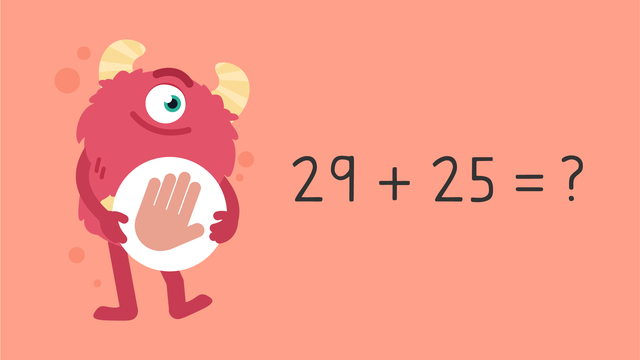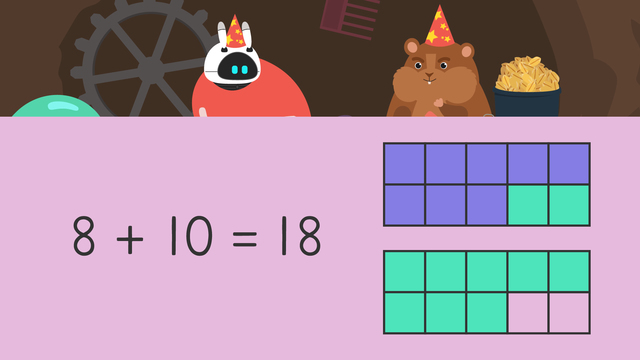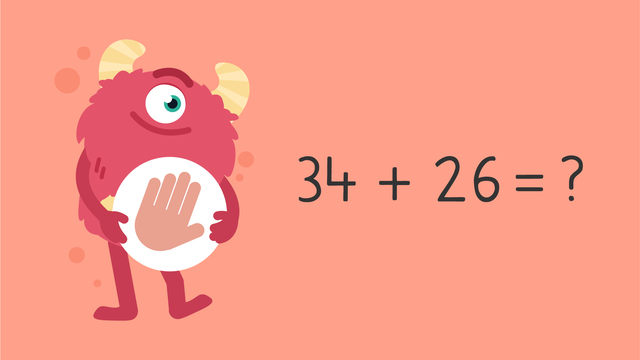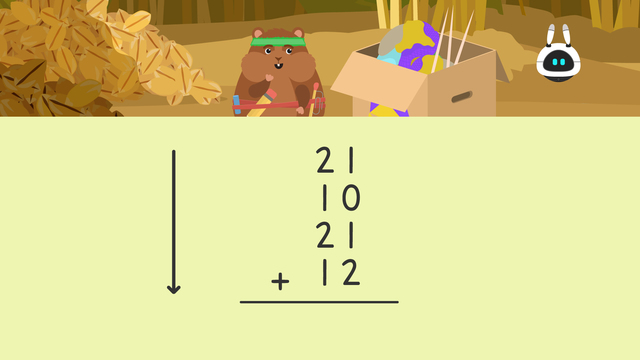Compensation in Addition — Let's Practice!
- Compensation in Addition – Introduction
- Understanding Compensation in Addition – Definition
- Compensation in Addition – Example
- Compensation in Addition – Guided Practice
- Compensation in Addition – Application
- Compensation in Addition – Examples


Basics on the topic Compensation in Addition — Let's Practice!
Compensation in Addition – Introduction
Get a piece of paper and a pencil ready because today we're going to practice something called compensation in addition. It’s a cool trick that makes adding numbers easier and faster. Ready to begin? Let's go!
Understanding Compensation in Addition – Definition
Compensation in addition means adjusting one number to make the math easier, and then doing the opposite adjustment to the other number.
For example, if you add one to a number to make it easier, you subtract one from the other number to keep the balance. You will see that using number pairs to 10 will prove to be very helpful here! Let’s practice this with some fun problems!
Compensation in Addition – Example
Let's solve a problem using compensation in addition:
Problem
If Mr. Squeaks has 29 blue flowers and 25 red ones, how many does he have in total?
Solution
Follow these simple steps to find the solution.
| Step | Explanation | Result |
|---|---|---|
| Choose which number to make friendlier | Let's make 29 friendlier | |
| Add to the friendlier number | Add 1 to 29 | 29 + 1 = 30 |
| Adjust the other number | Subtract 1 from 25 to keep the balance | 25 - 1 = 24 |
| Add the new numbers | Add 30 and 24 | 30 + 24 = 54 |
So, Mr. Squeaks has 54 flowers in total!
Compensation in Addition – Guided Practice
Let's try another problem together.
Problem
If Imani has 34 screws and 27 nails, how many are there all together?
So, Imani has 61 screws and nails in total!
Compensation in Addition – Application
Now, try solving this problem on your own:
Problem If Mr. Squeaks has 58 red marshmallows and 32 blue ones, how many does he have in all?
So, Mr. Squeaks has 90 marshmallows in total!
Compensation in Addition – Examples
To be truly fluent in compensation in addition, have a look at some more examples and complete them by following the steps.
| Problem | Step 1: Make a Number Friendlier | Step 2: Adjust the Other Number | Step 3: Add the New Numbers | Solution |
|---|---|---|---|---|
| 29 + 25 | Add 1 to 29 to make it 30 | Subtract 1 from 25 to make it 24 | 30 + 24 | 54 |
| 34 + 27 | Add 1 to 34 to make it 35 | Subtract 1 from 27 to make it 26 | 35 + 26 | 61 |
| 58 + 32 | Add 2 to 58 to make it 60 | Subtract 2 from 32 to make it 30 | 60 + 30 | 90 |
Compensation in Addition – Summary
Key Learnings from this Text:
- Compensation in addition makes adding numbers easier and faster.
- Adjust one number to make it friendlier, and do the opposite adjustment to the other number.
- Always remember to balance your adjustments.
Keep practicing compensation in addition to become a math whiz! Check out more fun math problems and activities on our website, especially try out using compensation in subtraction
Compensation in Addition – Frequently Asked Questions
Transcript Compensation in Addition — Let's Practice!
Razzi says get a piece of paper and a pencil ready (...) Because today we're going to practice... Compensation in addition! It's time to begin! Compensation is something given in return for something. Remember, when using compensation in addition, whatever you add to one number you MUST do the opposite for the other number. Let's practice! If Mr. Squeaks has twenty-nine blue flowers and twenty-five red ones, how many does he have in total? Start by choosing which number to make friendlier, or easier to add. Don't forget, whatever you do to one number you MUST do the opposite to the other. Here, you can take one from twenty-five and add it to twenty-nine to make thirty. Did you also get fifty-four? Let's tackle the next problem! If Imani has thirty-four screws and twenty-seven nails, how many are there all together? Don't forget, whatever you do to one number you MUST do the opposite to the other. Here, you can take one from twenty-seven and add it to thirty-four to make thirty-five. Did you also get sixty-one? Let's tackle the next problem! If Mr. Squeaks has fifty-eight red marshmallows and thirty-two blue ones, how many does he have in all? Don't forget, whatever you do to one number you MUST do the opposite to the other. Here, you can take two from thirty-two and add it to fifty-eight to make sixty. Did you also get ninety? Razzi had so much fun practicing with you today! See you next time!
Compensation in Addition — Let's Practice! exercise
-
What is compensation in addition?
HintsWhatever you do to one number, you must do the opposite to the other number.
One is compensated on each side to make 29 + 25 friendlier, or easier, to add.
SolutionCompensation is something given in return for something.
-
What number is compensated in 18 + 12 = 30?
HintsUse a pencil and paper to work on this problem.
How can you make 18 + 12 friendlier, or easier, to add together?
SolutionThe 2 is compensated in this addition problem to make the numbers friendlier, or easier, to add.
-
Complete the addition problem.
HintsUse a pencil and paper. What number do you subtract from 22 to equal 20?
Use a pencil and paper. What number do you add from 48 to equal 50?
SolutionThe completed problem is shown here.
-
How many fruits does Kayla have all together?
HintsUse a pencil and paper. What number do you subtract from 33 to equal 32?
Use a pencil and paper. What number do you add to 49 to equal 50?
SolutionKayla has 82 fruits all together.
-
What number is compensated in this addition problem?
HintsWhat number do you add to 29 to equal 30?
What number do you subtract from 25 to equal 24?
Solution1 is compensated in this problem to make the addends friendlier, or easier, to add.
-
Solve the problem using compensation in addition.
HintsUse a pencil and paper. What number do you add to 9 to equal 10?
Use a pencil and paper. What number do you subtract from 11 to equal 10?
9 + 11 = 20
Solution- 9 + 11 = 20
- 28 + 22 = 50
- 47 + 13 = 60
- 55 + 25 = 80

Order in Adding

Using Make Ten to Add

Compensation in Addition

Compensation in Addition — Let's Practice!

Subtract Using Addition — Let's Practice!

Make a Number Line to Add — Let's Practice!

Adding Four Two Digit Numbers

Using Place Value to Subtract (Regrouping)

Using Place Value to Add Two Digit Numbers (No Regouping)










This is the best video in the best app